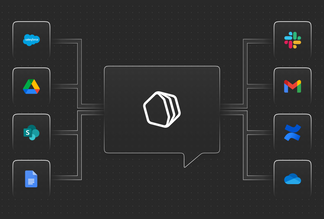
When it comes to the workday, aim for better, not fewer
Six-hour workdays. Four-day workweeks. Unlimited vacation. To hear our LinkedIn feeds tell it, this recent mass telecommuting experiment has thrust an entire white-collar workforce into a potential revolution of labor arrangements.
In all honesty, the previous bar was set pretty low. We can get much more creative — and since the “future of work” is actually many futures (it wouldn’t be progress if we all had to follow the same path), there’s no time like the present to be thinking out loud. The reshaping of corporate culture can’t happen without a restructuring of working arrangements.
Below are several alternative flexwork scenarios — all of which address the notion that our problem at hand isn’t necessarily that we work too much, but that poorly structured work doesn’t work for us. Notice, crucially, how these arrangements require a foundation of strong teamwork platforms and processes, as any healthy work environment does.
PAR (Part-Time, Asynchronous, Remote)
Part-time contract laborers arguably represent the earliest iteration of remote work, yet the once-tenuous communications aspect of such arrangements has made significant strides towards normalcy in the workplace as asynchronous tools have improved. Of course, not everyone is willing or able to work on a part-time contract in exchange for the freedoms of being a digital nomad, but the implications of this growing worker population creates food for thought across the labor force.
As roles and personnel transition into PAR for the sake of work/life balance, two interesting organizational consequences often emerge:
- Structure increases, because as more people place hard caps on their workload (and work outside the office), informal processes become difficult to sustain. Working with a PAR employee is a constant reminder that a coworker’s time is the company’s money, and spending it requires justification.
- Profitability increases, because the valuable work gets done, while the work that traditionally festers due to lack of resistance now gets challenged, or dropped altogether.
As PAR becomes more appealing to management-level positions, the notion of time as the true currency — not money — will get much more interesting. Conventional organizations typically don’t know how else to reward employees than with raises and bonuses; a practice that guarantees diminishing returns in the long-term. Rewarding high performers instead by offering to limit working hours is not only a practice that tends to lead to mutual benefit, but also mitigates the burnout that comes with leaning too hard on your best people to carry the weight of others.
Historically, PAR employees have also served well as affordable solutions to servicing international clients — or, particularly needy clients. It’s a vital counterpoint to one of the strongest anti-async arguments, which is that clients and customers have level of service demands which include presence and prompt response times. Dealing with the client conundrum — namely, taking the leap to manage your client expectations rather than cater to them — is perhaps where we see the greatest distinctions between orgs that run innovative work/life cultures and orgs that can’t seem to adapt.
Productivity Windows
Academic research aside, we’re only recently starting to see for ourselves just how unproductive an eight-hour office shift is. With the advances made in asynchronous collaboration platforms and work hubs, productivity windows offer a natural progression.
Jane might be most focused from 8 am-12 pm and most collaborative from 4 pm-7 pm, whereas Carlos may thrive in a synchronous environment from 1 pm-6 pm while doing his best isolated work from 11 pm-1 am. Knowing the productivity windows of our coworkers can help us build teams and cultures that vastly improve both collaboration and productivity — a difficult, double-barreled goal that has traditionally been tackled sloppily and unsuccessfully with environments geared towards forced interaction.
We could very well find our future selves applying to jobs based on how well we complement the existing team’s productivity windows.
Zero Commitment
Let’s take a hard reset on the unfortunate management tactic of pressuring employees to leave their Slack status as “available” 24/7, and consider how innovative a zero-commitment working environment could be.
Many of us have seen the bevy of workplace studies making arguments such as “deep work is ruined by distractions,” or “most collaboration happens after meetings rather than during,” or “employees have natural productivity windows.” A lot of this research carries a common thread: people function better on their natural clocks than on the company clock.
We addressed this previously, but to take it even further, we could theoretically implement a zero-commitment work schedule using just two tools:
- A platform that communicates whether an employee is currently available, busy, or offline (statuses come in many flavors but I’ve chosen these for their ease of automation)
- A platform that tracks employee performance (with organizational KPIs, and/or with ongoing 360° evaluations)
So, what does a “zero-commitment” workplace look like in practice?
Quite simply, each employee interacts with the organization as often or as little as they like. No required hours, and no vacation — if you only decide to work one day a year, and all your performance metrics and peer feedback is positive, then you’ve done your job. If someone else tries to adopt such a working arrangement, and their contributions begin to suffer as a result, then that feedback will reel them back in towards the arrangement that best balances their preferences with their performance.
Undoubtedly, such an arrangement can only succeed when the org has both the means to measure productivity objectively and the kind of culture where feedback is welcomed and protected across the organizational hierarchy. What prevents the “race to the bottom” of employee participation is ongoing assessment — whether it happens every week or every month — which ensures the employee is still pointed in a direction that management and peers are satisfied with.
Zero commitment also does away with the facade of being “busy” at work because whatever you’re busy doing has to eventually contribute in a way that can be measured by KPIs or assessed by your peers.
For many leaders, extending this much short-term trust to employees sounds outlandish. But ironically, it is only the lack of solid feedback that would send this model off the rails … and the organizations that have the most to fear in that case are the ones that already fail to hold feedback sacred in their corporate culture.
Regardless of how revolutionary your working arrangement may or may not be, what’s important to remember is that concerns about adopting new labor conditions typically don’t stem from logic or wisdom; they stem from fear, bias, and the natural inertia of human reluctance. We have virtually no body of evidence (neither scientific nor anecdotal) to justify our conventional approach to work, and growing proof that the undercurrent of good corporate culture lies in flexible working arrangements. Again, there’s no better time than the present to be examining what your future of work could be.



